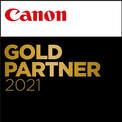|
While the notion of a paperless office sounds great in principle, the reality is that many small or home office (SOHO) businesses still have a need to copy printed documents on a regular basis. The old style standalone office copy machines have nearly disappeared in the digital age, replaced by multifunction printers that combine the functions of printing, copying, scanning, and optionally faxing into a single device. Technically a “copier” in today’s terms is normally a printer that has a built-in scanning device so that a document to be copied can be scanned and reproduced by the printer. As with most electronics copier/printer devices continue to decline in price yet come with more features than ever, and the convenience of copying in house rather than driving to a print/copy shop can't be beaten. Here are the key buying factors to help you choose a printer/copier for your SOHO. Inkjet vs Laser/LED For high-speed copying of text documents Laser/LED printers are generally the better choice. Inkjets are capable of printing at much higher resolutions and so are more suitable for graphics and especially for photographs. Cost When looking at the cost of a printer/copier, it is important to take the ongoing cost of consumables into account if you plan to do more than occasional printing/copying. Manufacturers have changed tack in recent years and rather than making profits on selling printer/copiers now often sell them at cost (or even at a loss) and instead make huge profit margins on selling ink and toner. Many units now come with ink/toner cartridges that have embedded microchips that prevent “unofficial” cartridges from being used, or have “starter” toner cartridges that have half the normal capacity. That bargain inkjet or laser doesn’t look as cheap when it comes time to replace the expensive ink or toner cartridge(s). Color printer/copiers are particularly expensive to run as they require 4 cartridges (black and white, cyan, magenta, and yellow). It is typical for the replacement cost of inkjet/toner cartridges to exceed the purchase price of an entire unit, making printers a common resident of electronics recycling depots and landfills. Fortunately most ink jet and some laser toner cartridges can be refilled at a much lower cost – companies such as Costco offer one hour inkjet refills, for example. Refill kits are also available for the do-it-yourself types, but refilling inkjet or toner cartridges is messy and not for the mechanically-challenged. And you can Make Printer Ink Cartridges Last Longer with little effort. Before you purchase a printer/copier, be sure to check the manufacturer’s published cost per page. Volume Most small business oriented printer/copiers aren't designed for heavy volume so check the unit's recommended usage (pages per month duty cycle). The ISO yield for the ink/toner cartridges will give you a rough idea of how often the cartridges will need replacement. Note that even if you have an in-house printer/copier it may still make sense to use local or online copy/print services (such as Staples or UPS) for larger print/copy jobs or specialty printing such as brochures. With the price of consumables (as described above) it is simply not cost effective to do large volume printing/copying on less expensive printers/copiers, particularly with color documents or photographs. Purchasing a lower cost printer/copier for basic needs and outsourcing larger print/copy jobs is an ideal compromise for most small businesses - running off 500 copies of a color business brochure is a job for a professional printing shop. Duplexing Duplexing is the ability to print/copy on both sides of the page and is a highly desirable feature. Besides saving paper it is a must for making professional copies of two-sided printed material. Connectivity For using the machine as a printer, the more options to connect to the device the better. Aside from direct USB connectivity to a PC, most printer/copiers come with network connectivity - wired, wi-fi, or both. If you need printing from the cloud or from mobile devices make sure your printer supports technologies such as Google Cloud Print or Apple AirPrint. Black and White or Color? Color copying is slower and more expensive, but might be a feature you want your printer/copier to have if you intend to produce promotional materials for your small business, such as brochures, or copy color photos. Media Versatility As the main reason to buy a copier for your small or home office is convenience, you'll want to be sure to choose a copier that's able to handle a variety of paper sizes and weights and other media, such as transparencies and index cards. Look for copiers that offer flatbed copying if you're concerned about copying from books or copying other objects that won't fit through a sheet feeder. Paper Handling As a small business person, you have better things to do than refilling paper trays or feeding single sheets through a printer/copier. If you print/copy regularly look for a model with a paper capacity of at least 250 sheets - or more. You'll also definitely want an automatic document feeder that holds at least 30 sheets. Response Time Printer/copiers that have no warm up time are ideal for small and home offices, where the machine may be sitting idle for hours or days. High print/copy speeds are great, but won't save you any time if you have to wait minutes for the unit to warm up every time it comes out of sleep mode. Some printer/copiers now offer a first copy time of less than 10 seconds. Source : Susan Ward (The Balance)
5 Comments
|
AuthorFSM Solution Archives
December 2023
Categories |
Online Store
Product |
Services |
Authorized Sales & Services
|
Contact Us |
Copyright © 2023 FSM Solution Sdn Bhd. All Rights Reserved.


 RSS Feed
RSS Feed














